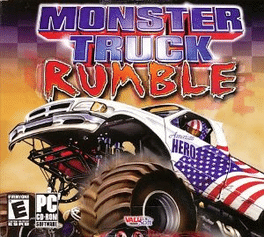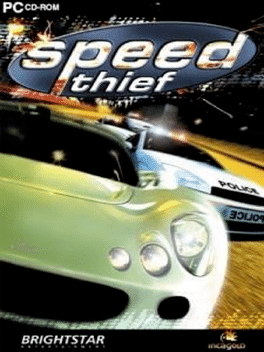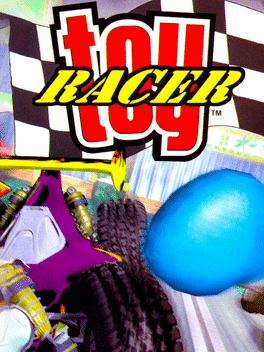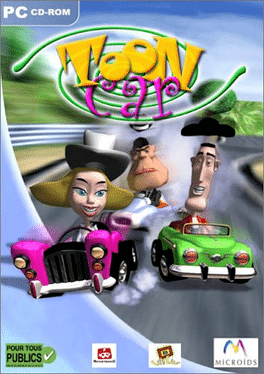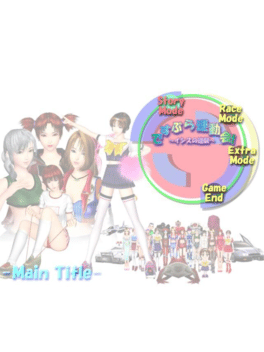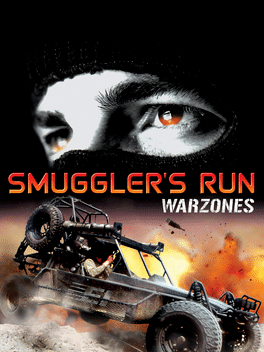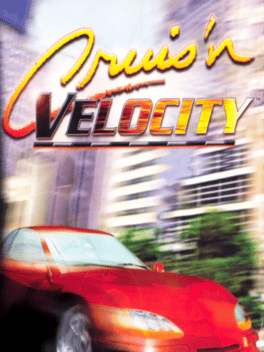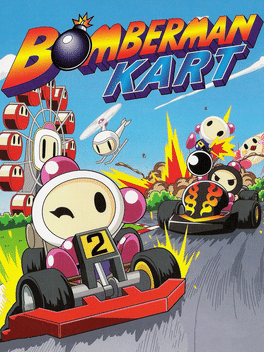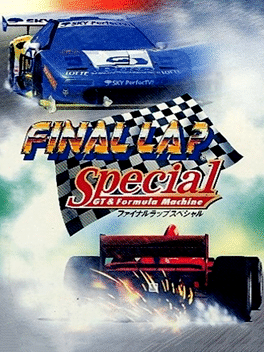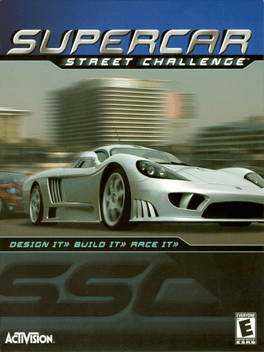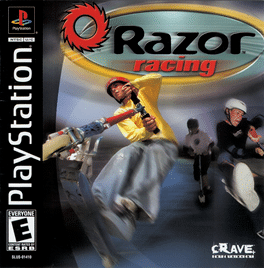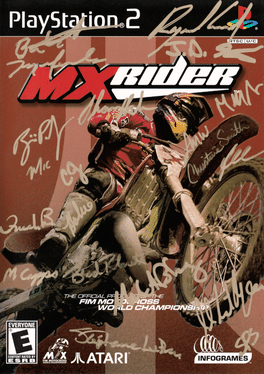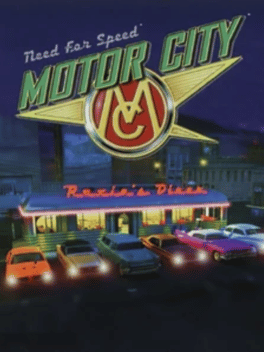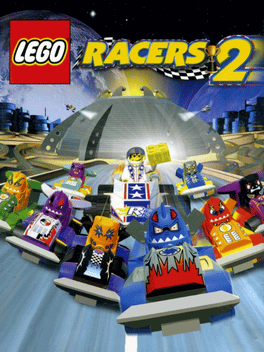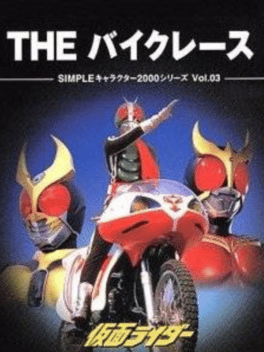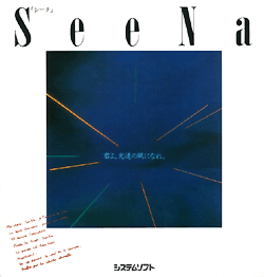New Racing Games - Page 106
-
Monster Truck Rumble
2001
-
Speed Thief
2001
Speed Thief
2001
Speed Thief transports you into the dark world of the professional car thief. You steal to order and must deliver the goods to the harbor under cover of night. Be warned...the cops are on your tail and will stop at nothing to catch you! This is a thrilling game, combining the classic car chase with night time traffic. -
Toy Racer
2001
Toy Racer
2001
Toy Racer is a racing game that's an extension of Toy Commander racing sections, designed exclusively for both offline and online multiplayer modes for up to four players. As a result, there is no possibility to play against AI controlled players, being the only single player features of the game both a Practice and a Time Attack modes. -
Toon Car
2001
Toon Car
2001
star 13D racing game inspired by Mario Kart, localized for Eastern Europe and Russian markets. You have to get "driving licenses" in order to progress through the game, and there's a crazy announcer that pops out from the side of the screen. -
Des Blood Racing
2001
-
Smuggler's Run: Warzones
2001
star 6Race around five unique massive levels transporting various contrabands all the while avoiding police and other smugglers. You are a smuggler working for Frank Luger who's company will transport anything anywhere. (Except drugs, kids, say no to drugs.) There are over 175 different missions with dozens of different objectives from a simple race to destroying a target to transporting 15 different contraband in less than 20 minutes. -
Cruis'n Velocity
2001
Cruis'n Velocity
2001
Grab the steering wheel of 11 different speed machine. Race through 14 tracks including Las Vegas and Mars. Choose from three modes of gameplay - Cruis'n Cup, Championship and Freestyle mode. Challenge up to four of your friends using the Game Boy Advance Game Link Cable. -
Wangan Midnight: R
2001
Wangan Midnight: R
2001
Wangan Midnight: R is a racing game based on the Wangan Midnight manga. For Arcade it is a revised and updated version of Wangan Midnight while for the PS2 it is the first version and the first home console release in the series as well. The PS2 release has an AC Scenario mode (original Arcade Scenario mode), Mission mode, Time Attack mode and an i.Link Battle mode (local multiplayer) similar to the Versus mode used for the two units of the arcade cabinet. There is also a Replay Theater where replays of races can be viewed. The mission mode has a number of challenges against one or more opponents divided over eleven series (series one to ten and then Tune as the final one). The game contains licensed cars from the manufacturers Mazda, Mitsubishi, Nissan, RUF, Subaru and Toyota. -
Bomberman Kart
2001
Bomberman Kart
2001
Bomberman Kart is a racing game for PlayStation 2 starring the Bomberman characters. It is similar to Mario Kart. The game supports 4 player local multiplayer using the PlayStation 2 Multitap. The first version was released in 2001 in Japan and later 2003 in Europe. The second version, called Bomberman Kart DX (director's cut) was released in 2004 only in Japan. Both versions have never been released in the United States. -
Larry Ragland's 4x4 Challenge
2001
Are you ready for high speed offroad competition in the only game endorsed by Larry Ragland, winner of 5 Baja 1000 races? Race on 8 different short tracks designed by offroad pros in 15 different high-powered 4x4's, for 3 different championships. The races are long, the competition is fast, and the outlook is grim. All you got is your skills and unerring faith in your machine. Are you ready for Larry Ragland's 4x4 Challenge? Larry Ragland's 4x4 Challenge (LRC from now on) is basically an arcade racer in a short-track offroad setting. Usually set inside a stadium or such, it features some unknown-make vehicles (no adjustments allowed) each with slightly different ratings in handlings, acceleration, and more. The courses are very reminiscent of the ones in LEADFOOT (by Ratbag Interactive). The tracks are your typical supercross type-tracks... Lots of curves, jumps, and a few straights with switchbacks and more switchbacks. The tracks are different enough as some are longer with higher speed whereas some are low-spe -
Final Lap Special: GT & Formula Machine
2001
Final Lap Special: GT & Formula Machine is a Racing game, developed by Soft Machine and published by Bandai, which was released in Japan in 2001. -
Supercar Street Challenge
2001
Climb in, get behind the wheel and buckle up for the ride of your life! Street Lethal is no ordinary racing game. Rampage through the streets of spectacular interactive city envrionments such as London and Paris. Hold on tight as you drive the hottest modern concept cars. If you've ever dreamed about driving high-class speedsters like the Callaway C12, the Pagani Zonda C12-S, and the Fiorvanti F100, you're in luck. Travel through the streets of the world's most prominent cities in a race of the ultimate driving machines. You'll hit speeds above 200 miles per hour as you dodge through street fairs, back alleys, and more in an attempt to win. Experience the power of driving these previously inaccessible vehicles, enjoying 3D graphics and an awesome soundtrack all the while. -
Go, Poliwrath!
2001
Go, Poliwrath!
2001
An e-reader mini-game that made use of six different Pokémon TCG cards. The player can select one of the six Pokémon listed below to race against a Marill and a Golduck, by scanning the respective TCG card from the Expedition Base Set. #060 Poliwag #061 Poliwhirl #063 Poliwrath #090 Shellder #098 Krabby #183 Marill -
Razor Racing
2001
Razor Racing
2001
Razor Racing, the follow-up to Razor Freestyle Scooter, brings the popular sport into the realm of race competition. Combining speed with elements from the previous title, players take their scooters and hit one of three locales in an attempt to become a racing legend. Each location (city streets, mall, and an industrial compound) is composed of three separate sections. In the first round, players qualify for the race by completing three laps within the allotted time. Next, players race by challenging two other opponents in a three-lap challenge. Completing these two objectives will open up the area's skatepark, and by beating the park's overall score, a new member will be added to the racing team. -
MX Rider
2001
MX Rider
2001
The complete motocross experience! Endless gameplay with 23 officially licensed motocross and supercross tracks and 6 fantasy freestyle arenas. Pull over 30 unreal tricks, some the pros are too sane to try. Race as one of 60 real life pro riders, each with their own unique attributes and racing styles. Get a team sponsorship and upgrade to a mind-blowing speed bike or the ultimate trick machine. Pull a quad can can over the shark tank (watch out, he bits) in one of 6 fantasy freestyle arenas. -
LEGO Racers 2
2001
-
Simple Characters 2000 Series Vol. 03: Kamen Rider - The Bike Race
2001
Kamen Rider will outrun the Shocker in this racing game aimed at the ultimate goal. Take on a circuit with a total of 13 authentic bikes from the Kamen Rider series. Grand Battle mode takes rival riders across the circuit. Or duke it out in Battle Royal mode! -
SeeNa
2001
SeeNa
2001
First-person action game, published by SystemSoft for Japanese computers in 1986. Its polygonal 3D graphics engine was a technical milestone, rendering 3D environments at a fast pace and (compared to the tile-based, right-angle movement of earlier first-person games) allowed the player to move with full 360-degree movement. -
Hot Wheels: Burnin' Rubber
2001
Start your engines and race for the championship in your favorite Hot Wheels cars as they fly over jumps, careen around hairpin turns and speed through radical environments!
